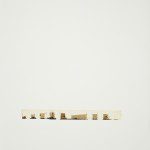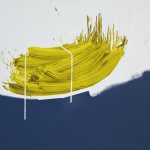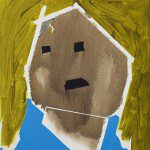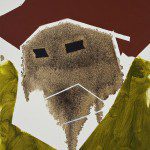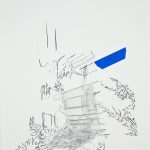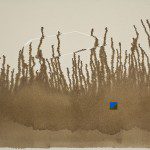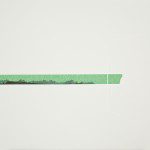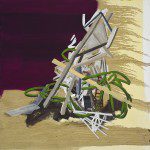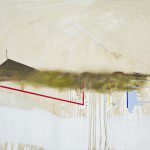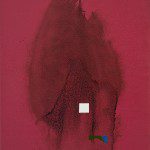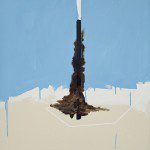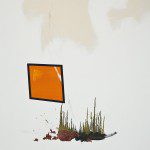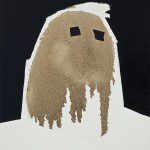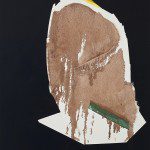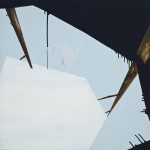In the exhibition To Build a Home, artist Trevor Kiernander explores relationships and detachment, by utilizing the canvas as a means to decipher the overload of visual debris in his lived environment. The 2008 mixed media work Fallout exemplifies this exploration. The artist incorporates interesting combinations of muted color, brushstroke, rigid shapes and fragmented imagery. These elements possess the ability to function in isolation while remaining integral to the unity of the canvas. Kiernander’s 2009 work Treehouse provides evidence that various forms of architecture have the ability to function as ‘home.’ This work plays on the nostalgia associated with what could be considered one of the first autonomous spaces of childhood experience. The artist’s geometric dispersal of light blues, brown and white, offers the viewer a visually tangible memory of childhood days in the backyard, glancing up from the security of ones constructed environment.
Kiernander is successful in creating images that are familiar yet exist independent of visual references. His ability to evoke emotion through the use of color and various materials illustrates one of the most interesting aspects of this work. His work Things Fall Apart (2008), offers a scene of disarray. The incorporation of various animal forms and falling boxes provides the illusion of movement. However the lifeless rabbit and swan complicate this reading by remaining static. These elements allude to a deeper underlying experience, one that speaks of disconnect. In The Garden (2009), the artist combines abstraction and foreign materials including oil and acrylic paint, charcoal, and vinyl tape in order to create non-representational imagery. The rigidity of the orange object provides disjuncture in what appears to be an otherwise serene landscape. This type of juxtaposition relates the viewer to the experience of displacement from ones comfortable environment. Despite the title’s association with a serene space, this work illustrates how our relationships with particular spaces can also inform our reactions and experiences with others. The works in the oeuvre of Trevor Kiernander act as palimpsests. They maintain a surface layer of unity while simultaneously offering a narrative of dislocation. Upon first glance they appear to be abstract, though after closer examination they entice the viewer by offering fragments of something vaguely familiar yet foreign. Once the viewer begins deciphering the layers of these palimpsests, the various conceptions of ‘Home’ and the attachments associated with imagery that reflects everyday lived environments, become apparent.


